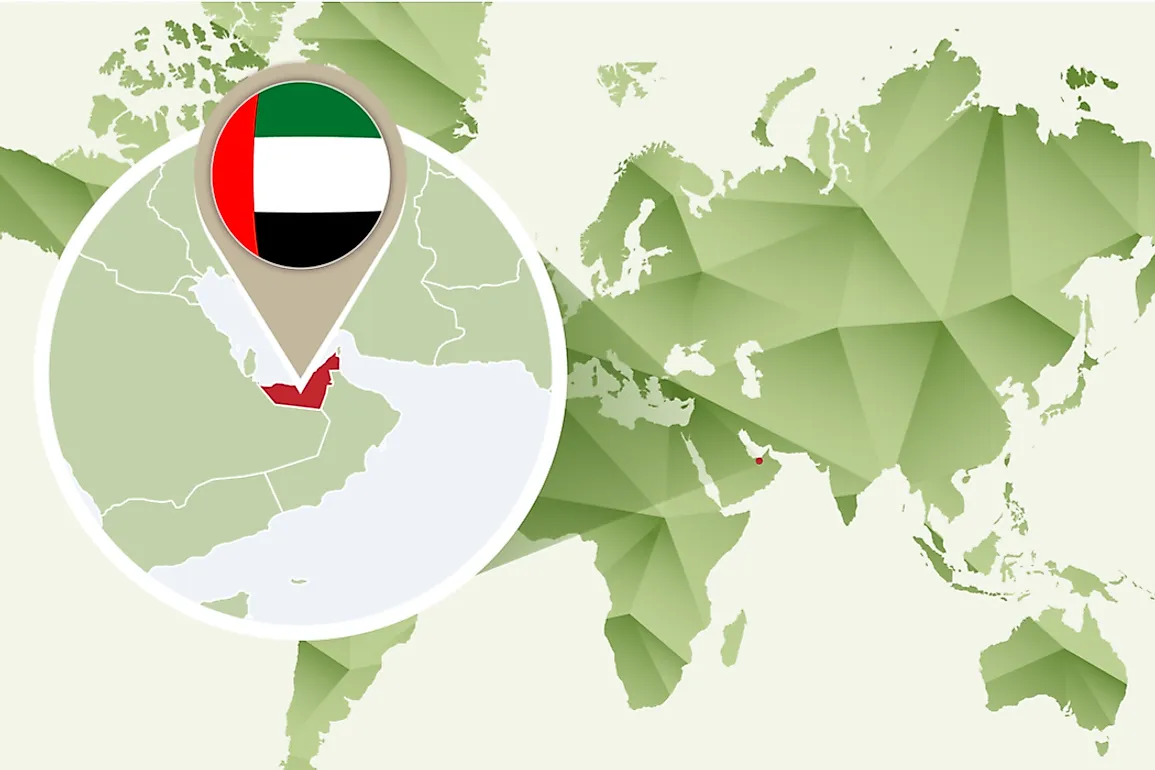What Continent Is The United Arab Emirates In?

The United Arab Emirates (UAE) is a small country located towards the southeastern edge of the Arabian Peninsula. It is bordered by Oman to the east and to the south by Saudi Arabia. The country is also bordered by the Persian Gulf and the Sea of Oman, with the UAE having maritime borders with Iran and Qatar. Located in the region known as the Middle East, the UAE is part of the continent of Asia.
Geography of the United Arab Emirates
Covering around 83,600 square kilometers (32,300 square miles), the UAE is the 114th largest country on Earth in terms of land area. For perspective, this makes the country about the same size as Austria or the US state of Maine. Most of the land is vast swathes of desert, with the northeastern part of the country having some mountainous areas. Many of the major cities, as well as islands and coral reefs, are found along the coastline.
The UAE is a federation of seven different emirates, which are Dubai, Abu Dhabi, Fujairah, Ajman, Sharjah, Ras al-Khaimah, and Umm al-Quwain. Abu Dhabi is the dominating emirate, accounting for almost 87 percent of the UAE's land, as well as serving as the capital of the country.
Dubai is the largest and most well-known city in the UAE. It has grown over the decades to become known as a lavish global city, business hub and tourist destination. This city accounts for just under three million of the UAE's estimated population of about 9.3 million. A majority of the UAE's population are expatriates from other countries, with most coming from India, Pakistan, Bangladesh and Sri Lanka. Only about 1.4 million people in the country are Emirati citizens.
History of the United Arab Emirates
In 1820, the five sheikdoms of Abu Dhabi, Ajman, Ras al-Khaimah, Sharjah and Umm al-Quwain signed the General Maritime Treaty of 1820 with the United Kingdom. Thus, they became an informal protectorate of Great Britain that became known as the Trucial States (1820-1971). This peace treaty prohibited piracy in the Persian Gulf and mandated that all working ships be registered with British forces. The British did this in order to pacify the Persian Gulf and to exclude other competing powers. It also let them keep an open line of communication with India, known then as British Raj (1858-1947).
However, irregular conflicts still took place with the British until 1835 where the aforementioned sheikdoms and Dubai agreed to a new treaty which prohibited all conflict throughout the economically important pearling season. By 1843, this led to a ten-year peace truce. Eventually, the positives of being able to trade and harvest pearls undisturbed led to the sheikdoms signing the Perpetual Treaty of Maritime Peace in 1853 to make the provisions of the 1843 treaty "lasting and inviolable."
With the Exclusive Agreement (also known as the Treaty of 1892), the Trucial Sheikdoms formed a close bond to the United Kingdom by becoming a formal British Protectorate. In return for being protected from any aggression, the sheiks agreed to not enter into alliances with foreign powers (unless consent was granted) or to dispose of any territory. In 1936 and 1952, the sheikdoms of Kalba and Fujairah were added as members of the Trucial States.
The United Kingdom announced in 1968 that it would end the Trucial State's status as a protectorate in 1971. This led to a series of negotiations between the Emirates, as well as Qatar and Bahrain, over forming a union together. Eventually, the latter two dropped out and the six emirates finally agreed to form a union together on July 18, 1971. On December 2, 1971, these emirates all signed the Act of Union to create the UAE. Ras al-Khaimah, the seventh and final emirate, joined on February 10, 1972, to form the modern-day UAE.











